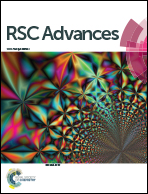Ultrathin annealing-free polymer layers: new opportunity to enhance mobility and stability of low-voltage thin-film organic transistors†
Abstract
A critical challenge for organic electronics in current research is the dielectric layer and the corresponding interfacial engineering, which determine the mobility, the stability, the power consumption, the miniaturization and the flexibilization. In this work, we demonstrate an ultrathin annealing-free polymer layer (5 nm) with compact structure and perfect surface state, which shows the potential to address this challenge. The polymer displays an ultra-smooth surface and suitable surface energy (close to that of organic semiconductors), which facilitates the growth of semiconductors with large grain sizes and reduces the trap density, thus further enhancing the mobility and the stability of the devices. The compact structure and perfect surface state make the application of an ultra-thin device (55 nm dielectric layer and 10 nm semiconductor layer) and low-power consumption (10 V) possible. Furthermore, the annealing-free process indicates that the polymer can be fabricated on any substrates, and therefore flexible electronics can be expected. Such an efficient method with ultrathin dielectric and semiconductor layers provides us with a valuable approach to achieve miniaturized, low-power and low-cost device fabrication and can be extended to other nanodevices.


 Please wait while we load your content...
Please wait while we load your content...